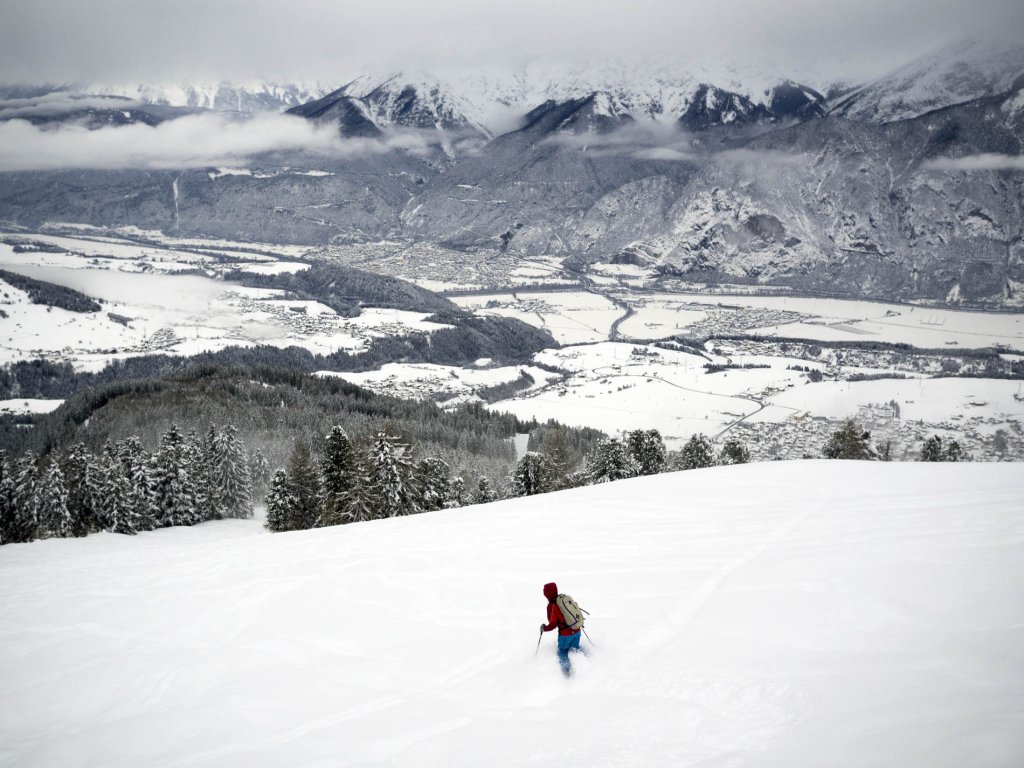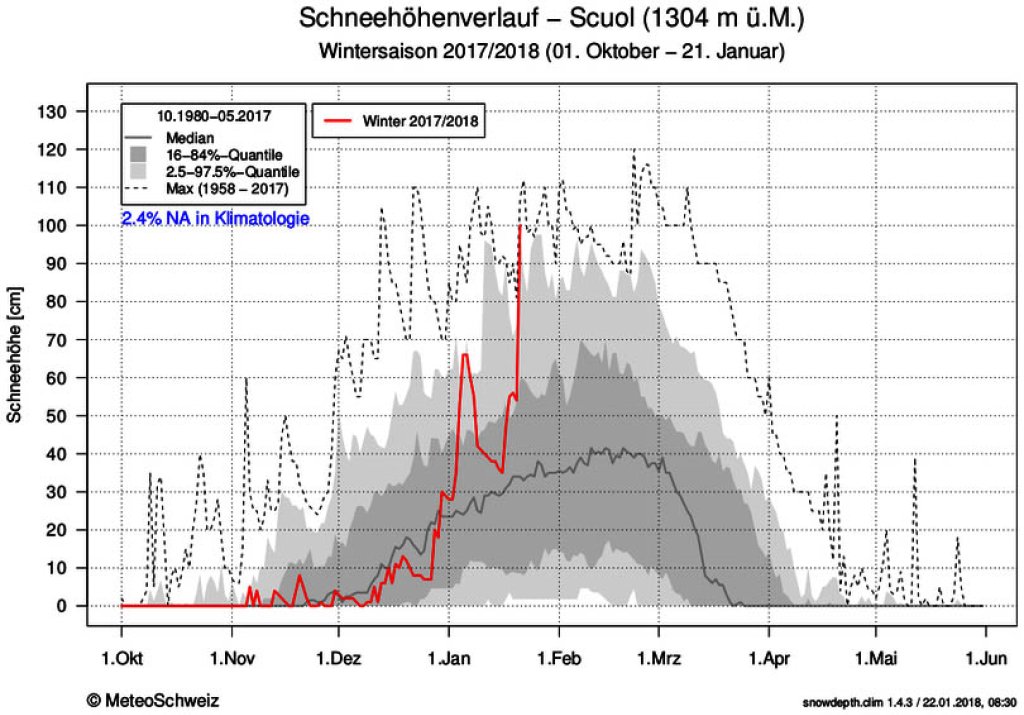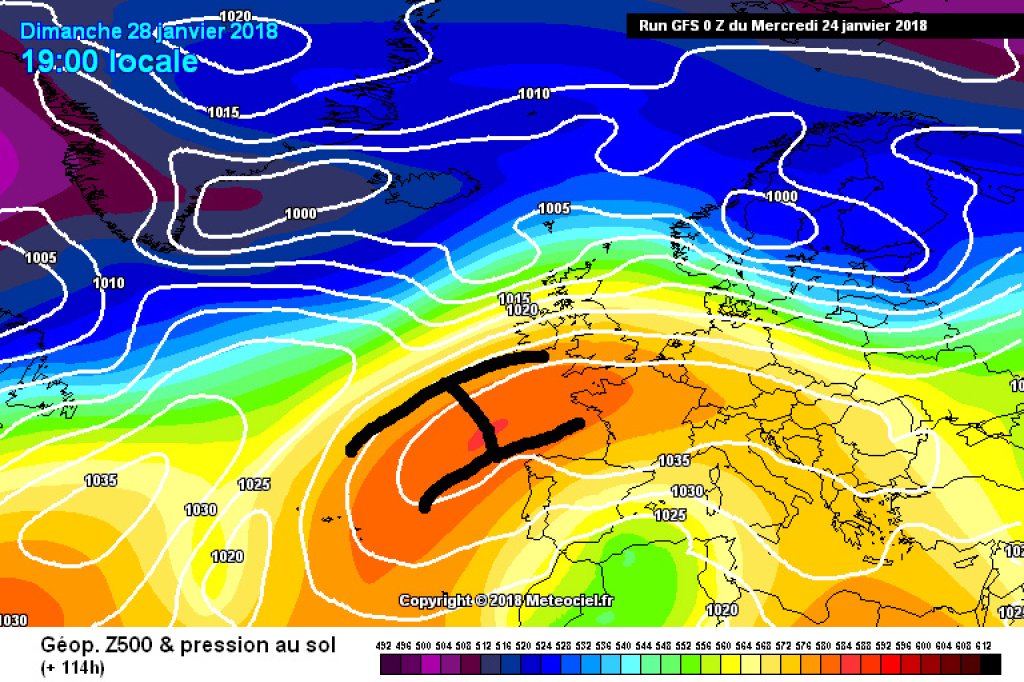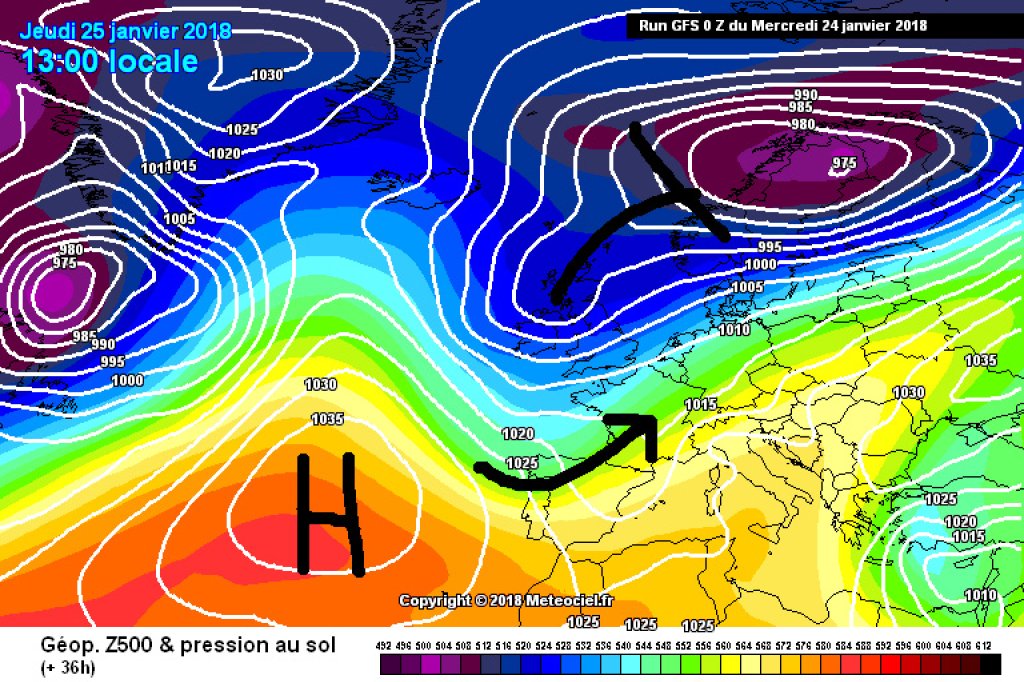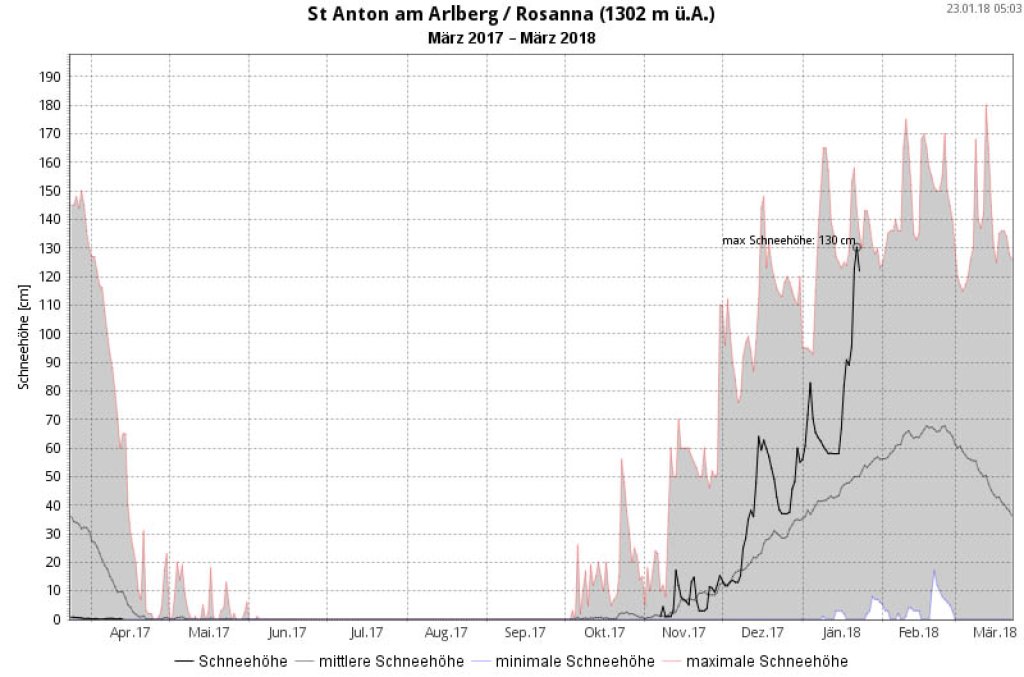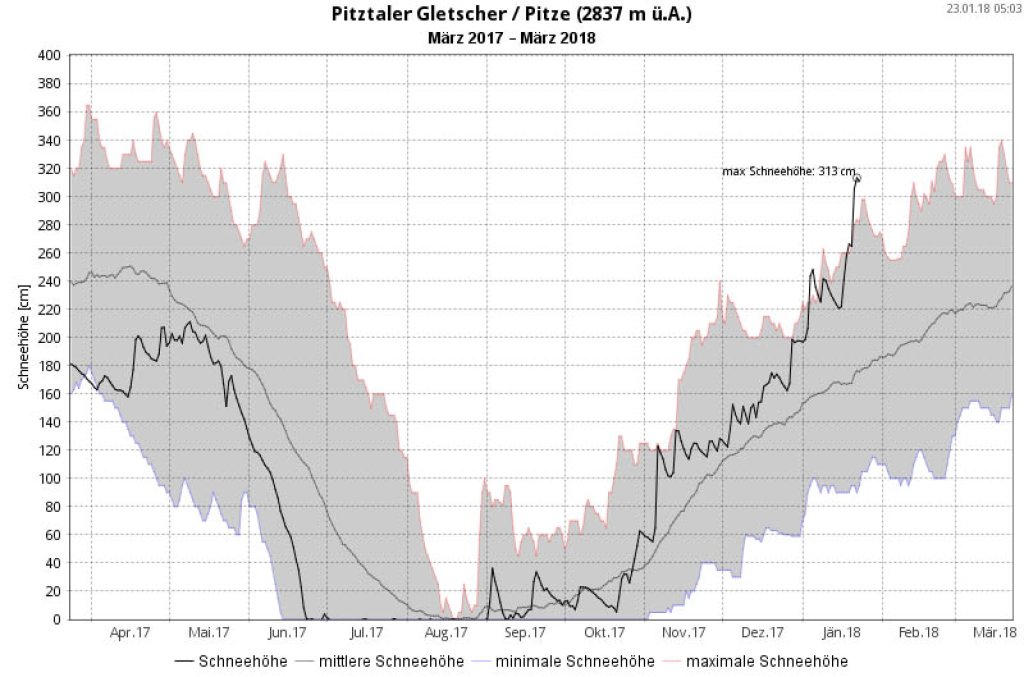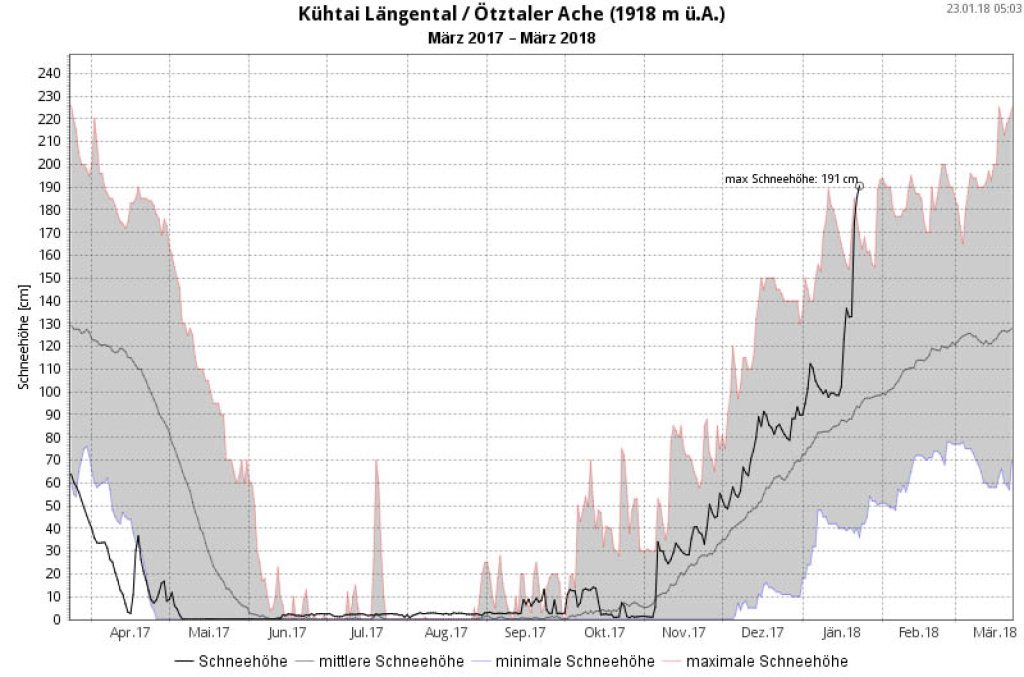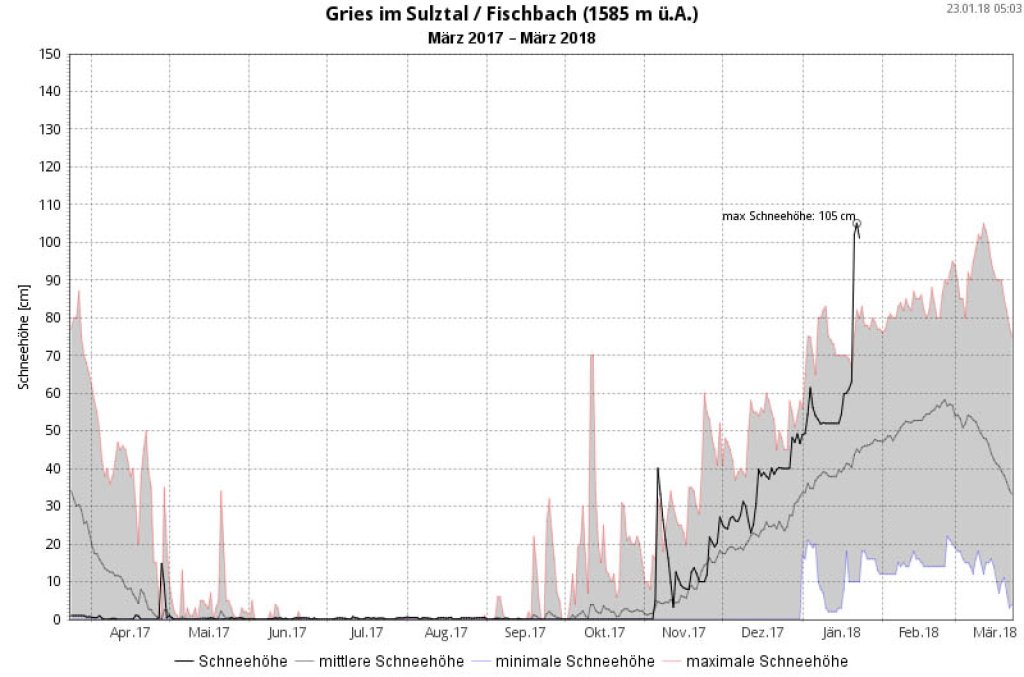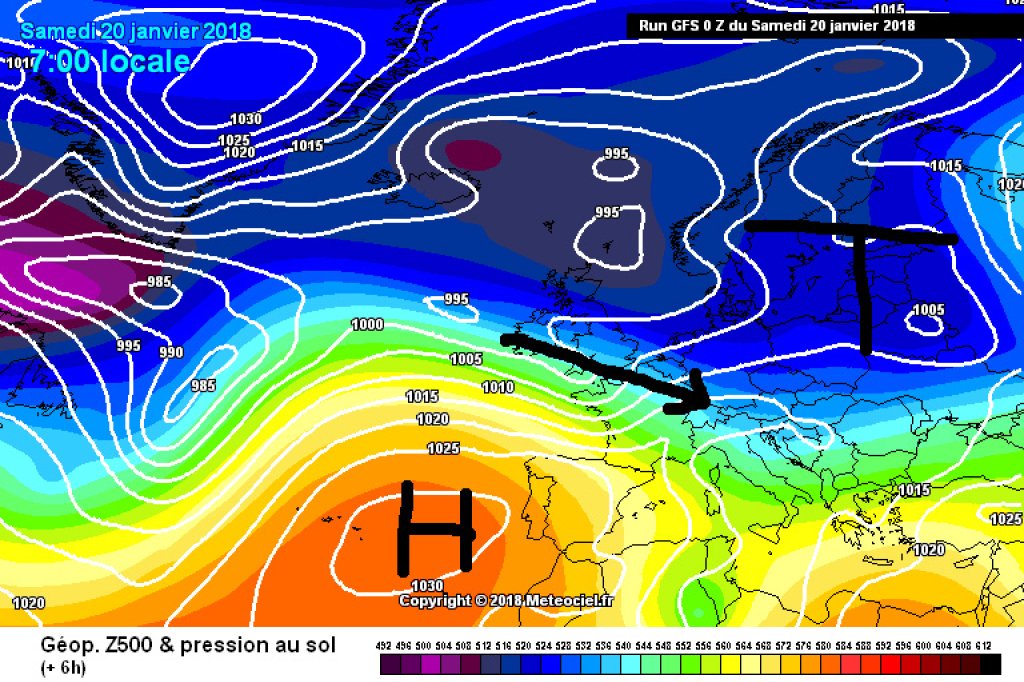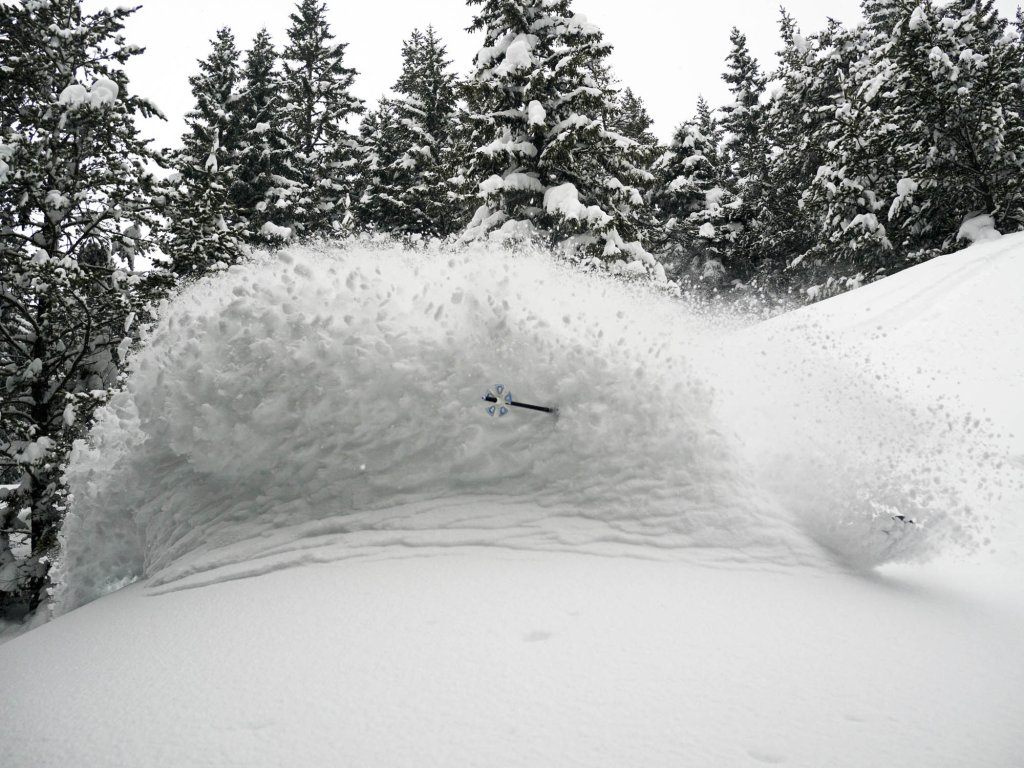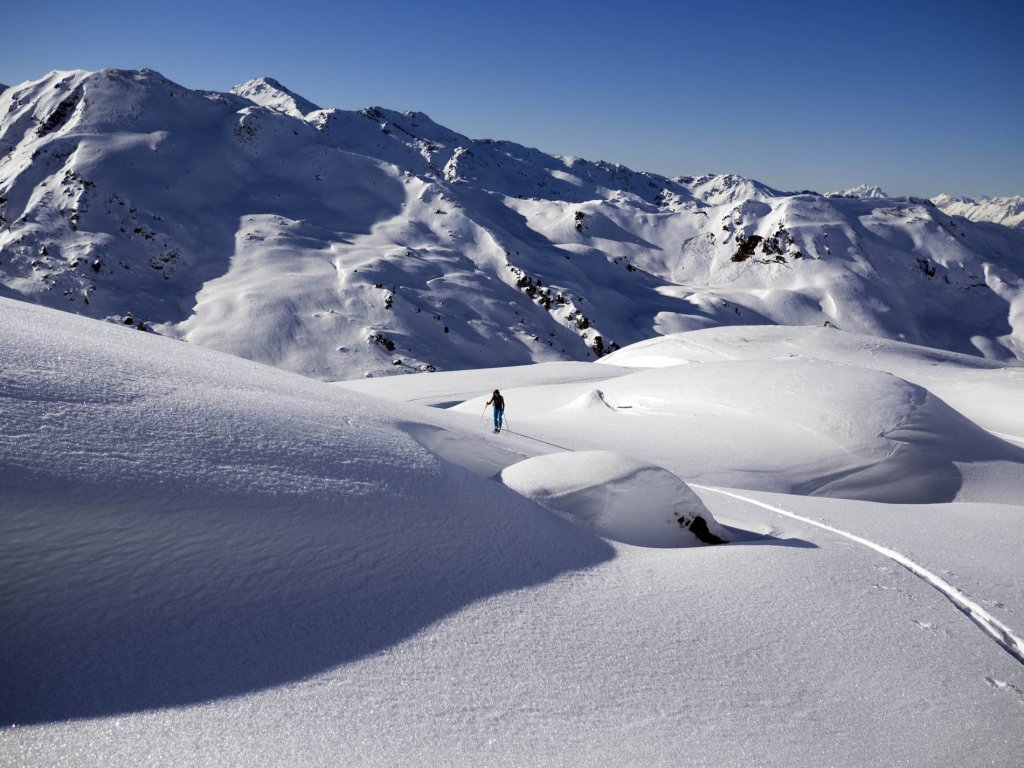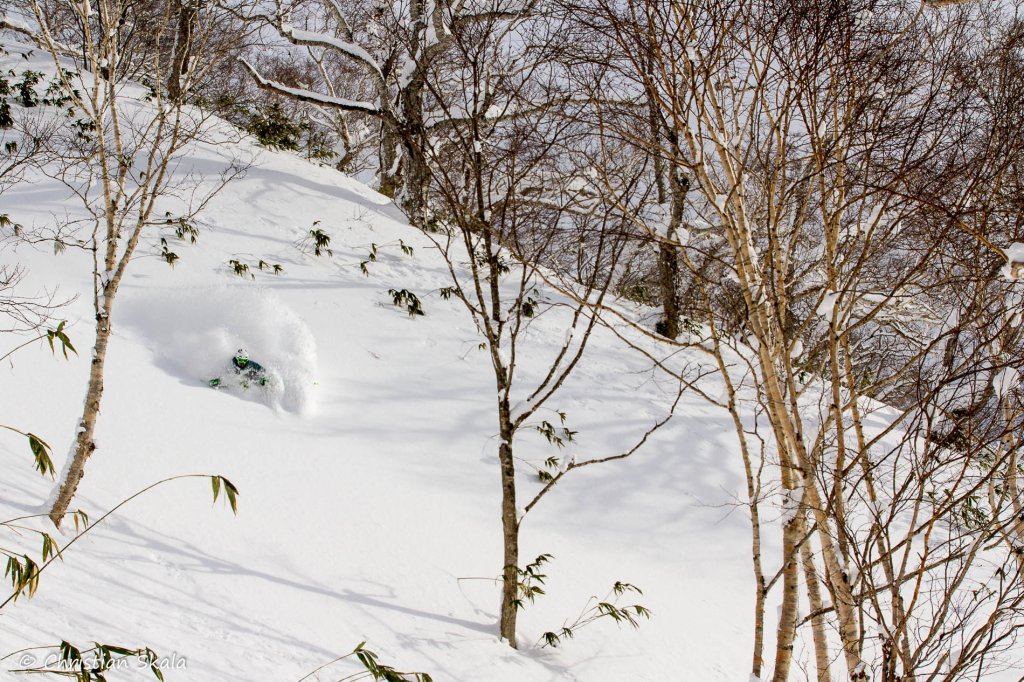The heavy snowfalls of the last few days
Smaller peripheral lows were steered towards the Alps last weekend and on Monday on the back of a long-wave trough with a main center over the Baltic States. The disturbances were embedded in a very strong north-westerly to westerly current and brought both precipitation and strong storms. Various fronts reached the Alps in several stages, with the snow line briefly rising to around 2000m, especially in the west, with the arrival of a strong warm front on Monday.
In view of the fresh snow totals of 1 to 2 meters in two days and the significant rise in temperature, a level 5 was issued in large parts of Switzerland on Monday, as well as in the west of Tyrol. A number of villages and valleys, including the many tourists currently living there, are affected by road closures and snowed in, including St. Anton, the Paznaun Valley, Andermatt, Zermatt and Livigno. In addition to many smaller roads, the Reschen Pass, the Fern Pass and the German-Austrian border crossing at Scharnitz were also temporarily closed due to the risk of avalanches. Mudslides also became an acute problem due to the heavy rain: a mudslide caused a closure of the Gotthard highway on Tuesday. A mudslide also hit a road and railroad tracks in Simmental. There were considerable disruptions to train and road traffic, even on routes that were not closed. Some roads were already reopened yesterday, and some of the remaining closures are likely to be lifted in the course of today.
